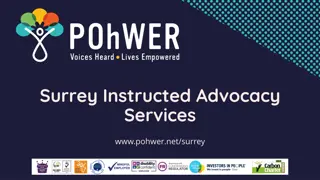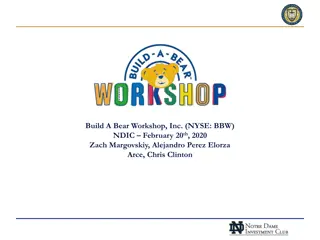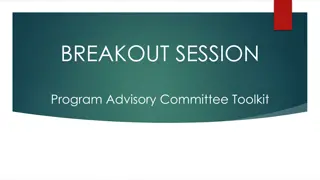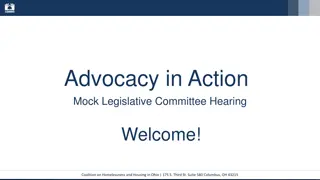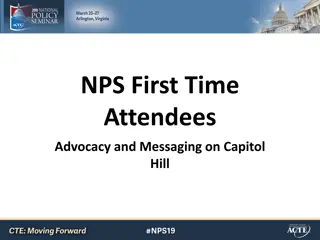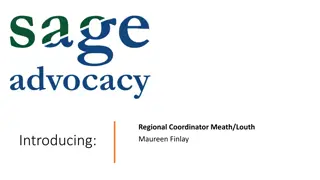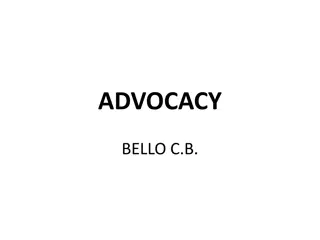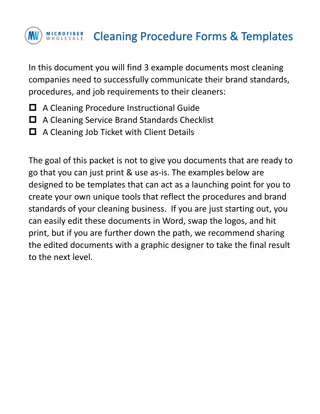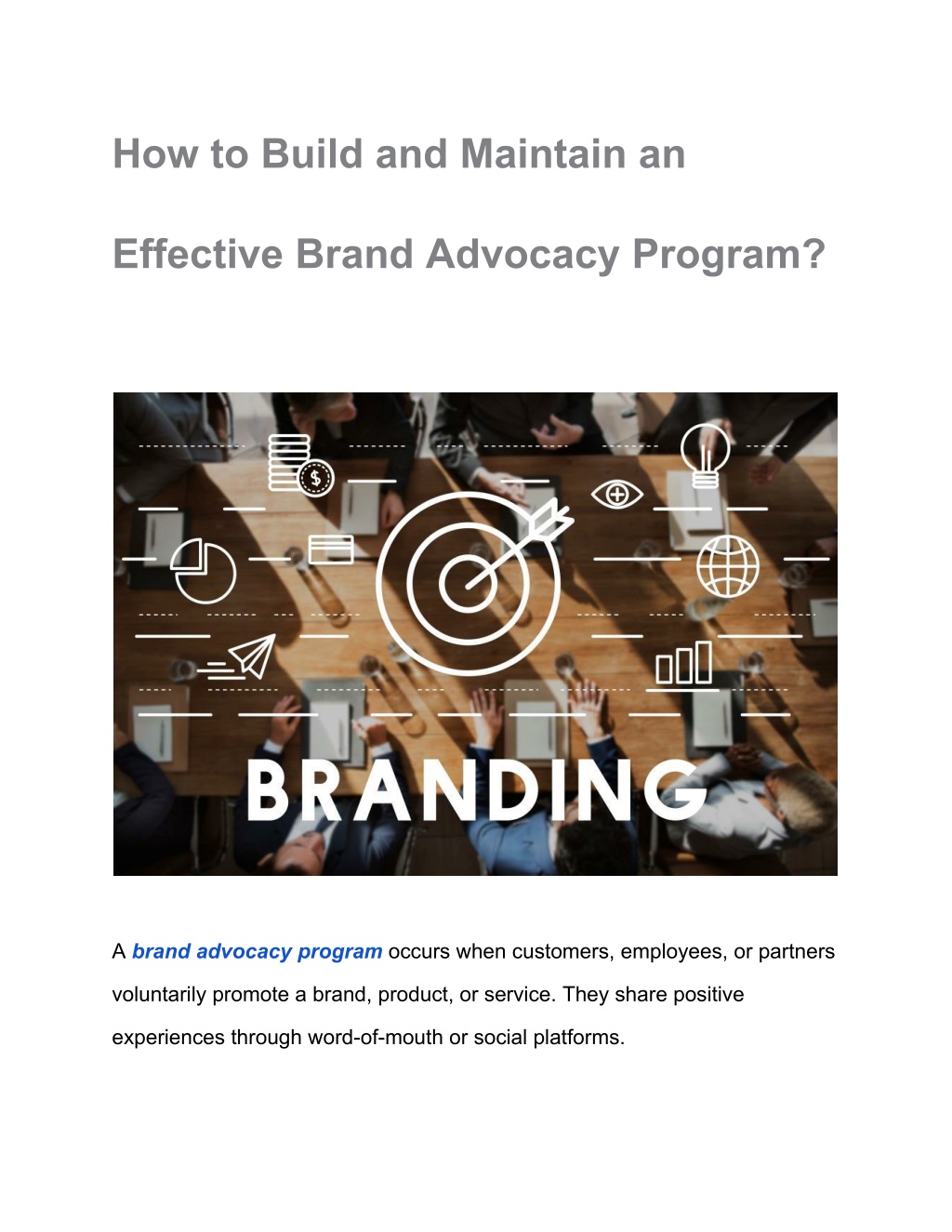
How to Build and Maintain an Effective Brand Advocacy Program
In todayu2019s competitive landscape, businesses are always on the lookout for new ways to engage their customers and stand out from the crowd. One of the most effective, yet often overlooked strategies is brand advocacy. A well-developed brand advo
Download Presentation

Please find below an Image/Link to download the presentation.
The content on the website is provided AS IS for your information and personal use only. It may not be sold, licensed, or shared on other websites without obtaining consent from the author. Download presentation by click this link. If you encounter any issues during the download, it is possible that the publisher has removed the file from their server.
E N D
Presentation Transcript
How to Build and Maintain an Effective Brand Advocacy Program? A brand advocacy program occurs when customers, employees, or partners voluntarily promote a brand, product, or service. They share positive experiences through word-of-mouth or social platforms.
Key characteristics of brand advocates include: Loyalty: Strong emotional connection with the brand. Credibility: Trusted opinions within their networks. Influence: Ability to impact others purchasing decisions. The benefits of a strong brand advocacy program are numerous: 1. Increased Reach: Expanded visibility through personal networks. 2. Enhanced Credibility: Authentic recommendations boost trust. 3. Cost Efficiency: Organic promotion reduces marketing expenses. 4. Customer Insights: Feedback from advocates can inform improvements. Importance of Brand Advocacy brand advocacy program entails customers and employees championing a brand s products or services. Effective brand advocacy programs can significantly enhance brand reputation, credibility, and trust. Key reasons for its importance include: Authenticity: Advocates deliver genuine, unsolicited endorsements. Reach: Advocates can amplify messages to new audiences. Cost-Effectiveness: Advocacy is often more affordable than traditional marketing. Engagement: Advocates foster deeper, more engaging customer relationships. Influence: Advocacy can drive purchasing decisions through peer recommendations. Recognizing these elements demonstrates the strategic value of investing in a robust brand advocacy program. Identifying Potential Brand Advocates
Identifying potential brand advocates requires a thorough approach. Start by analyzing customer data. Utilize customer relationship management (CRM) tools and social media analytics to pinpoint engaged customers. Look for those who consistently interact with the brand across channels. Key indicators include: High Net Promoter Scores (NPS) Frequent engagement on social media posts Repeat purchases and loyalty program participation Additionally, consider the following: 1. Customer Feedback and Reviews: Regularly leave positive reviews. 2. Referral Program Participation: Often refer others to the brand. 3. Brand Mentions on Social Media: Tag and mention the brand frequently. Engage with these customers to gauge their willingness to become formal advocates. Reach out personally to build a strong relationship. Developing a brand advocacy program Strategy Establishing a strategy involves critical steps: 1. Identify Top Advocates: Leverage analytics to find loyal customers who actively engage. 2. Set Clear Goals: Outline specific, measurable objectives to gauge program success. 3. Create Engaging Content: Develop shareable, relatable content tailored for advocates.
4. Provide Incentives: Offer rewards like discounts, exclusive access, or gifts. 5. Training and Support: Equip advocates with resources and information about the brand. 6. Monitor and Adjust: Use feedback and metrics to refine the strategy continually. A well-structured strategy ensures sustained engagement and maximizes the potential of brand advocates. Creating Valuable Content for Advocates Develop content that resonates with advocates interests and passions. Make sure it fits the tone and messaging of the brand. Consider the following: Educational Guides: Provide comprehensive resources that enhance advocates understanding of the product. Exclusive Previews: Share early access to new features or products to create excitement. Engaging Stories: Publish stories showcasing real experiences and case studies. Interactive Challenges: Organize contests and challenges to drive engagement. Recognition Programs: Highlight top advocates to build a sense of community. To increase reach and impact on social media, every material should be simple to share. Engaging with Advocates Effectively Engagement with brand advocates is essential for a thriving advocacy program. Here s how to do it effectively:
1. Personalized Communication: Reach out with personalized messages. 2. Exclusive Content: Provide early access to new products or services. 3. Recognition Programs: Publicly acknowledge their efforts. 4. Consistent Interaction: Maintain regular touchpoints. 5. Feedback Channels: Establish clear ways to receive and act on feedback. 6. Training and Resources: Offer training to enhance their advocacy efforts. Investing in these practices can foster deeper connections and loyalty, driving sustained advocacy. Utilizing Social Media for Advocacy Social media plays a pivotal role in brand advocacy programs. Brands can use platforms like Twitter, LinkedIn, and Instagram for real-time engagement with advocates. Key strategies include: Identifying and nurturing top advocates by monitoring social media interactions. Encouraging user-generated content to amplify brand presence. Providing exclusive content and incentives to advocates for sharing on their social networks. Using social listening tools to gather insights and address advocate concerns promptly. Putting together webinars and virtual events to keep activists informed and involved. Sharing success stories and testimonials to build credibility and inspire other advocates. Effective social media utilization fosters advocacy growth.
Providing Training and Resources to Advocates Giving brand ambassadors the right tools and training guarantees their efficacy and compatibility with the company s principles. Training Programs: Implement comprehensive training sessions covering brand values, product knowledge, and advocacy best practices. Access to Resources: Provide advocates with marketing materials, promotional content, and exclusive product information. Consistent Updates: Offer periodic updates to keep advocates informed about new products, campaigns, and any changes in brand strategy. Support Systems: Set up dedicated support channels to answer any questions and resolve issues promptly. Recognition and Rewards: Create initiatives to recognize and reward advocates for their accomplishments and hard work. Monitoring and Measuring Advocacy Success Tracking the success of a brand advocacy program requires clear metrics and regular analysis. By establishing key performance indicators (KPIs) and utilizing the right tools, brands can accurately gauge the impact of their advocacy efforts and make informed decisions for continuous improvement. Key Metrics to Track: 1. Engagement Rates: Measure Likes, Shares, and Comments: Track the level of interaction on social media posts and other platforms
where advocates share content. High engagement rates indicate that the content resonates with the audience and prompts them to interact. Overall Interaction: Assess the frequency and quality of interactions, including mentions, direct messages, and discussions generated by advocates. 2. Customer Acquisition: Track New Customers: Monitor the number of new customers brought in by brand advocates. This can be measured through referral programs, unique discount codes, or tracking links specific to advocates. 3. Retention Rates: Evaluate Retention: Determine if brand advocates help retain existing customers by analyzing repeat purchase rates and customer loyalty over time. Higher retention rates suggest that advocacy efforts contribute to sustained customer relationships. 4. Content Reach: Assess Content Spread: Measure the reach of advocate-generated content by tracking impressions, shares, and the geographic spread of posts. A broad content reach signifies effective advocacy efforts that expand the brand s visibility. Tools for Measurement: 1. Analytics Platforms: Google Analytics: Use Google Analytics to track website traffic, user behavior, and conversion rates resulting from advocacy efforts. Hootsuite and Sprout Social: These social media management tools offer comprehensive analytics for
monitoring engagement, reach, and overall social media performance. 2. Customer Feedback: Surveys: Conduct regular surveys to gather direct feedback from customers about their experiences and perceptions influenced by brand advocates. Direct Feedback: Encourage customers to provide feedback through various channels, such as email, social media, or in-app messages, to gain insights into the impact of advocacy. 3. Sales Data: Compare Sales Metrics: Analyze sales data before and after implementing the advocacy program to identify changes in sales volume, average order value, and customer acquisition costs. This comparison helps attribute sales growth to advocacy efforts and determine the program s ROI. Rewarding and Recognizing Advocates Acknowledging advocates is crucial for sustaining engagement. Effective strategies include: 1. Incentives and Rewards: Offer exclusive discounts or products Provide early access to new releases Implement a tiered reward system for milestones 2. Public Recognition: Feature advocates on official social media channels Highlight stories on the company blog Provide badges or titles for top advocates 3. Exclusive Opportunities: Invite to special events or VIP programs
Offer sneak peeks or behind-the-scenes content Facilitate networking opportunities with brand executives 4. Feedback and Input: Solicit their input on new products Create advisory panels Recognize contributions to decision-making processes Addressing Challenges in Brand Advocacy Program Identifying and addressing challenges in brand advocacy program is crucial for building a sustainable and effective program. Key issues such as inconsistent messaging, lack of engagement, and difficulty in measuring ROI require strategic solutions to ensure the success of advocacy efforts. Inconsistent Messaging: A brand s voice can be diluted and the audience might get confused by inconsistent messaging. To tackle this issue, provide clear, cohesive guidelines for advocates. Create comprehensive brand manuals that outline the brand s values, tone, and key messages. Regular training sessions and workshops can help advocates stay aligned with the brand s communication strategies. Additionally, offering templates and example posts can provide practical guidance for maintaining consistency across all brand advocacy program efforts. Engagement: Fostering a sense of community among brand advocates is essential for maintaining high levels of engagement. Regular communication through newsletters, webinars, and social media groups can keep advocates informed and motivated. Personalized interactions, such as recognizing individual contributions and achievements, can make advocates feel valued.
Incentives such as exclusive content, early access to new products, rewards, and recognition can further boost enthusiasm and participation. Creating opportunities for advocates to network and share their experiences can strengthen the community and enhance overall engagement. Measuring ROI: Implementing robust tracking tools is crucial for monitoring the impact of brand advocacy programs. Measure key performance indicators (KPIs) including engagement rates, conversion rates, and total return on investment (ROI) with sophisticated analytics. Customer feedback surveys, social media analytics, and Google Analytics are a few examples of tools that might offer insightful data. Regularly analyzing these metrics allows for data-driven decisions and optimization of the brand advocacy program, ensuring it delivers tangible results and demonstrates its value to stakeholders. Future Steps Creating a successful brand advocacy program campaign involves ongoing observation and modification. Key Future Steps: 1. Evaluate Performance Metrics: Regularly measure program impact using KPIs such as customer engagement and sales growth. 2. Foster Relationships: Continuously engage with advocates through personalized communication and exclusive offers. 3. Enhance Training: Provide ongoing training and resources to keep advocates well-informed and motivated. 4. Utilize Feedback: Act on advocate and customer feedback to fine-tune program elements. 5. Expand Reach: Identify new platforms and communities for brand advocacy program efforts. 6. Leverage Technology: Incorporate advanced tools and analytics to optimize advocacy strategies.



